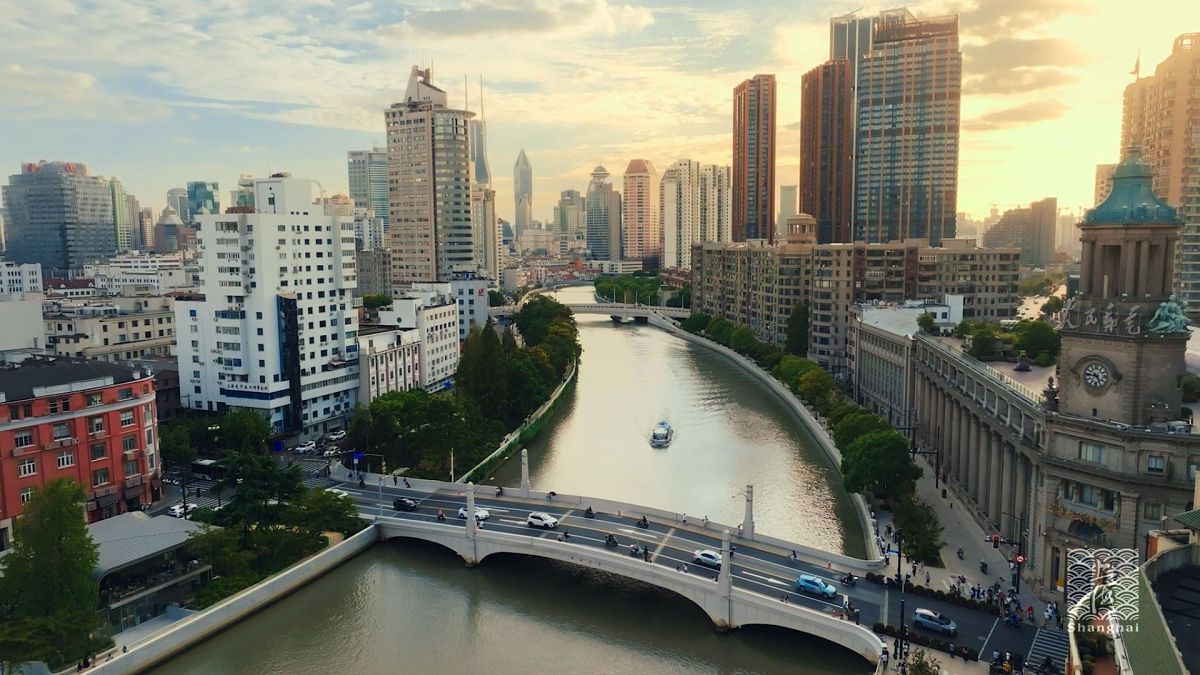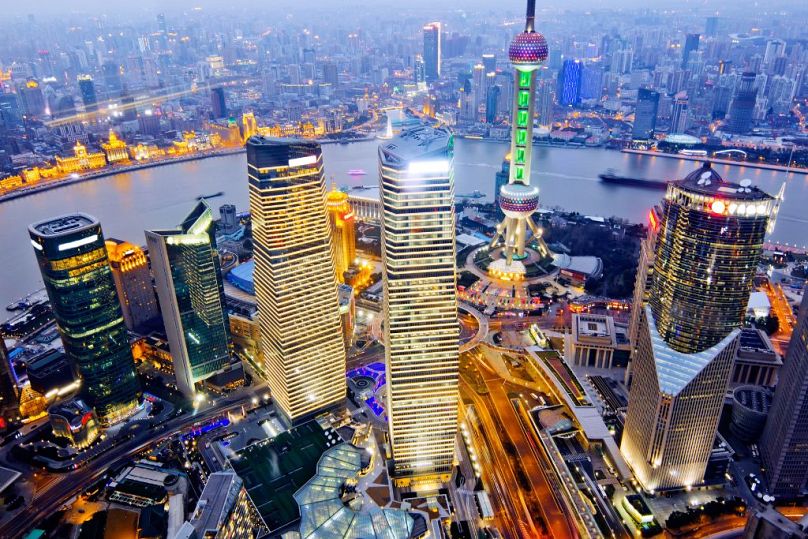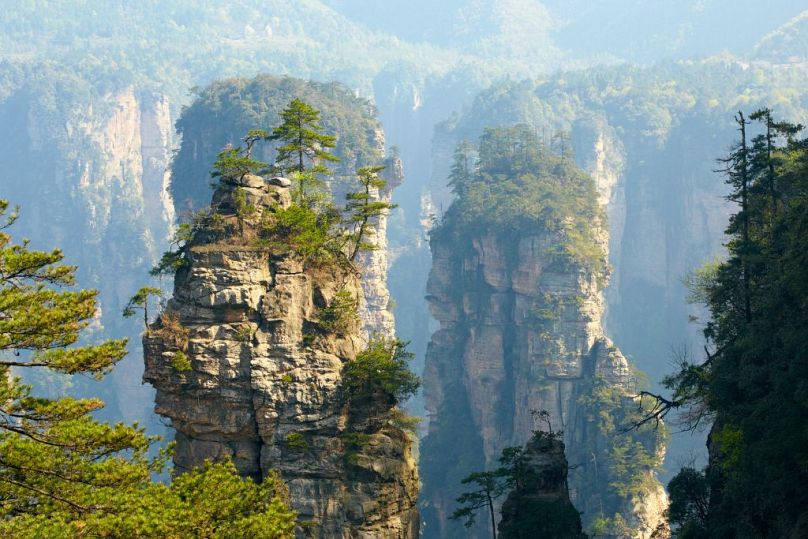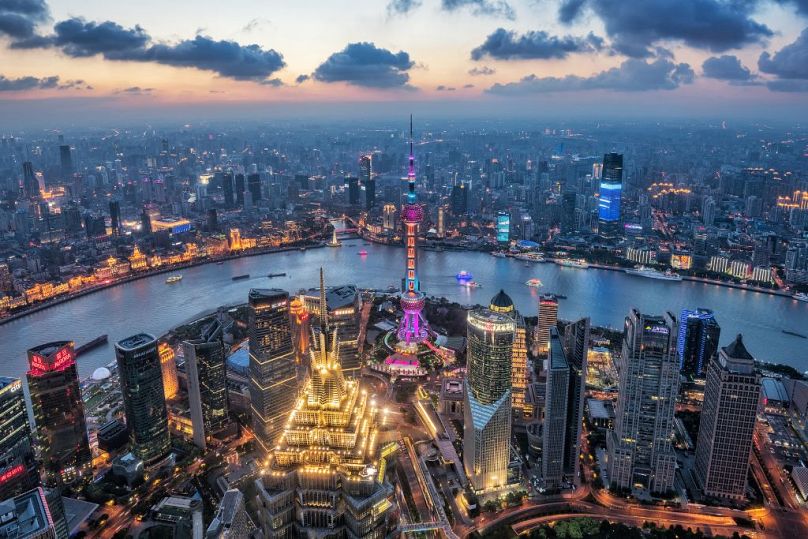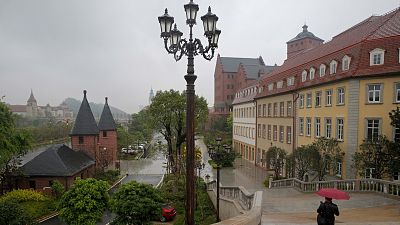Packed with culture, cuisines and futuristic cities, now is the time to visit China for an unforgettable holiday this year.
As the fourth largest country in the world, China has a vast area of diverse landscapes.
It is bordered by 14 other nations and is surrounded by the Pacific Ocean to the east; here, you'll find towering mountain ranges, expansive plateaus, fertile plains, lush forests, and vast deserts.
Some of China's record-breaking geographical landmarks include the Himalayas, the world's highest mountain range; the Yangtze River, the longest river in Asia; and the Gobi Desert, one of the world's most expansive deserts.
After three years of closed borders due to COVID, China's domestic tourism industry has experienced a robust post-pandemic rebound.
The South China Morning Post reports that domestic tourists spent approximately 633 billion yuan (€80.55 billion) over the 2024 Lunar New Year holiday period.
China's travel restrictions were lifted early last year, but international travel has yet to return to pre-pandemic levels, something the country hopes to change.
China recently introduced visa-free entry for citizens of seven European countries and Malaysia. Four more European nations have been added to the list as the country tries to encourage more people to visit for business and tourism.
Get off the beaten track in China
Most first-time visitors make a beeline for Beijing, Shanghai, and Xi'an, but several other provinces should also be added to your China bucket list.
The province of Yunnan in Southwest China has always been a "tourist paradise", according to Fang Limin from the Yunnan Provincial Department of Culture and Tourism.
Yunnan Provincial Party Committee and Provincial Government attaches "great importance to the development of culture and tourism industry", Limin explains.
They are "cultivating and building culture and tourism industry as one of the province's five trillion-dollar industries."
In recent years, Yunnan has improved its infrastructure and launched new cultural heritage tours, eco-tourism, and science tourism.
With a drive to increase tourism offerings in China, now is the time to visit this vast, culture-filled country to experience food, heritage, nature and high-speed trains.
Here's why you should consider China as your 2024 holiday destination.
The dishes you have to try in China
Take a flavour-filled culinary journey through China's diverse regional cuisines this year. In Beijing, try succulent Peking that combines duck tender slices of roast duck served with thin pancakes, spring onions, cucumber, and hoisin sauce.
In Sichuan, brace yourself for the fiery kick of dishes like mapo tofu and hotpot, while in Xi'an, indulge in the city's renowned hand-pulled noodles and flavourful lamb skewers.
Head south to Guangzhou, the birthplace of Cantonese cuisine, and indulge in dim sum delicacies like steamed dumplings, barbecue pork buns, and crispy spring rolls.
Remember also to explore the vibrant night markets of Shanghai, where you can feast on street food favourites like xiaolongbao (soup dumplings), scallion pancakes, and stinky tofu.
The unmissable cultural sites in China: From rural villages to the Forbidden City
China is a remarkable intersection of ancient cultures and languages with futuristic infrastructure that blends with impressive cultural sites.
At its core lies a deep reverence for family, community, and heritage, which permeates every aspect of daily life.
One of the defining features of Chinese culture is its rich artistic heritage, encompassing a wide range of disciplines, including calligraphy, painting, music, dance, and literature.
There are many places in China where you can experience a wealth of cultural heritage and the arts.
Explore the ancient wonders of the Forbidden City in Beijing, once the exclusive domain of emperors and their court. Discover the intricate architecture, sprawling courtyards, and priceless treasures illuminating China's imperial past.
Visit the spiritual Buddhist temples amidst Shaolin's misty mountains, where monks have practised martial arts for centuries.
You can also experience the vibrant festivals of rural villages, where dragon dances, lantern festivals, and traditional opera performances bring communities together in celebration.
Where to get your nature fix in China
For nature lovers, China is a paradise waiting to be discovered. From the snow-capped peaks of the Himalayas to the lush forests of the south, the country's diverse landscapes offer plenty of thrilling outdoor adventures.
Take a journey along the storied Silk Road, where camel caravans once traversed ancient trade routes through the deserts of Xinjiang.
Explore the otherworldly landscapes of Zhangjiajie National Forest Park, where towering sandstone pillars inspired the floating mountains of James Cameron's Avatar.
Trek through the terraced rice fields of Longji, where centuries-old farming practices have sculpted the hillsides into a patchwork of emerald green.
You can explore crystal-clear lakes, cascading waterfalls, and vibrant forests in the Jiuzhaigou Valley.
High-Speed Trains
High-speed train travel in China has revolutionised how people move across the country's vast expanse, offering passengers convenient, efficient, and comfortable transport.
The development of China's high-speed rail network began in the early 21st century as part of its ambitious efforts to modernise its transportation infrastructure and promote economic growth.
Since then, China has invested billions of dollars in constructing state-of-the-art railways, laying the foundation for a modern, interconnected society.
China's high-speed trains, known as CRH (China Railway High-speed) or Fuxing trains, are marvels of engineering and innovation. With top speeds reaching up to 350 kilometres per hour, these sleek and aerodynamic trains whisk passengers between major cities in a fraction of the time it would take by conventional rail or road.
The high-speed rail network connects China's major cities and regions, dramatically spanning vast distances and reducing travel times. From the metropolises of Beijing, Shanghai, and Guangzhou to the historic cities of Xi'an, Chengdu, and Hangzhou, passengers can traverse the country quickly and efficiently, exploring diverse landscapes, cultures, and attractions.
Shanghai: Step into the future in China’s cities
China has undergone rapid economic development and urbanisation in recent decades, transforming it into a global powerhouse and one of the world's largest economies.
Cities like Beijing, Shanghai, and Shenzhen have become dynamic metropolises, hubs of innovation, commerce, and culture.
As China's largest city and global financial hub, Shanghai is worth visiting for its futuristic skyline, featuring towering skyscrapers and neon-lit streets packed with modern shops and traditional markets.
"One of the standout features of Shanghai is its accessibility to non-Mandarin speakers," says Mr Zhang Hao from the Shanghai Municipal Administration of Culture and Tourism. "English indicators on road signs and metro stations make navigation relatively easy."
Check out famous landmarks that dominate the horizon such as the Oriental Pearl Tower and Shanghai Tower.
"These architectural marvels offer breathtaking views of the cityscape from their observation decks," says Mr Zhang Hao.
These towering structures and the historic waterfront promenade known as The Bund form the backdrop for Shanghai's modern urban landscape, offering panoramic views of the cityscape and the Huangpu River.
The city is also home to museums, galleries, and performance venues, including the Shanghai Museum, Shanghai Grand Theatre, and M50 Creative Park, where you can learn more about contemporary Chinese art and culture.
Where to see wildlife in China
To spot incredible wildlife, head to the province of Yunnan, in China's south-western corner.
It's home to 250 species of mammals, along with indigenous fish and reptiles. Yunnan is also the most bird-rich of any Chinese province, with over 800 species recorded.
This forest-rich province is a haven of biodiversity. Here, you'll find the Southeast Asian gaur, a giant forest-dwelling bovine, Box Turtles, the Indochinese tiger, and Asian elephants.
According to Limin, in addition to its wildlife, the province's lush landscapes and focus on eco-tourism have made it an "increasingly popular destination for outdoor sports and the preferred destination for international competitions."
